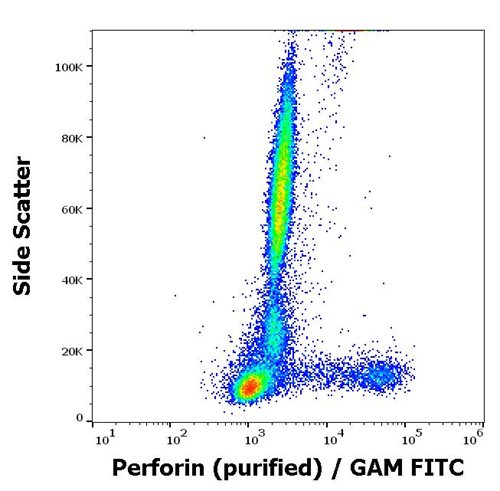|
|
| Alternative Name : |
Cyclic AMP-responsive element-binding protein 1, CREB-1, cAMP-responsive element-binding protein 1 |
| Immunogen Information : |
A synthetic phospho-peptide corresponding to residues surrounding Ser133 of human phospho CREB |
The cyclic AMP-responsive element (CRE)-binding protein (CREB) is a 43-kDa leucine zipper transcription factor that belongs to the CREB/ATF family and modulates the activity of many eukaryotic transcription factors by altering their subcellular localization, DNA binding, or transactivation response. It regulate downstream targets involving in various cellular functions including cell proliferation, survival, and differentiation (1-2). CREB activity is considered critical for neuronal function and regulates synaptic plasticity, long-term memory formation and neuronal survival (3). CREB serine 133 (Ser-133) residue is phosphorylated by various kinases and this phosphorylation promotes the interaction of CREB with a number of transcription coactivators, especially the histone acetyltransferases CREB-binding protein (CBP) or p300 (4,5). CREB can be phosphorylated and thus activated in response to various stimuli such as growth factors, neurotransmitters, stress signals that increase intracellular cAMP or calcium levels. CREB is also activated by phosphorylation at Ser-133 through nuclear translocation of transducer of regulated CREB activity (TORC) coactivators (6,7). CREB is phosphorylated in response to hormonal stimuli that increase intracellular cAMP production, but it can also be phosphorylated in response to a wide variety of extra-cellular signals, including growth factors, osmotic stress and ultraviolet irradiation. Several kinases including ribosomal protein S6 kinase (pp90RSK), protein kinase C (PKC), protein kinase B/AKT, and mitogen- and stress-activated protein kinase (MSK-1) can phosphorylate CREB at Ser-133 (1,8). Different growth factors such as mast/stem cell growth factor, basic fibroblast growth factor, and Granulocyte-macrophage colony-stimulating factor (GM-CSF), can all induce phosphorylation of CREB (9, 10). Phospho CREB, upon activation, dimerizes and binds to the promoter regions of its target gene that contains cAMP response element (CRE site), TGACGTCA, or CRE half sites CGTCA/TGACG, and promotes the recruitment of its transcriptional coactivators, CBP/p300, for CREB-mediated transcription. Therefore, phospho CREB can regulate various cellular mechanisms through modulating its target genes. CREB is progressively dephosphorylated by the Ser/Thr phosphatases protein phosphatase 1 (PP1) and PP2A.
1µg/mL - 0.001µg/mL. It is recommended that the reagent be titrated for optimal performance for each application. See product image legends for additional information.(0.5mg/ml, more than 200 western blots)
For Research Use Only. Not for use in diagnostic/therapeutics procedures.
|
There are currently no product reviews
|

















.png)











